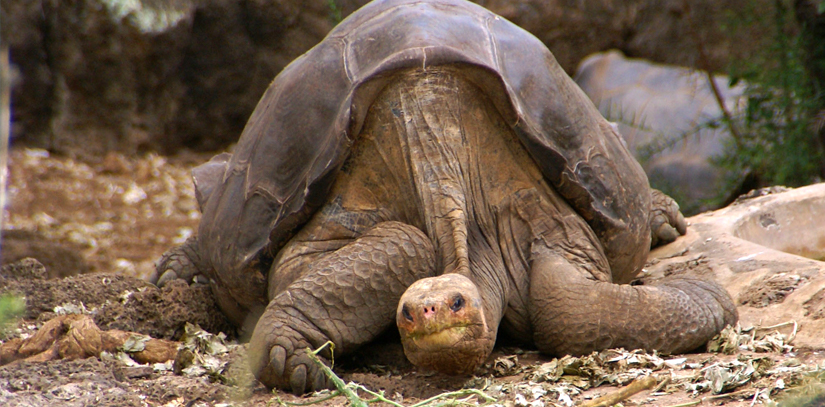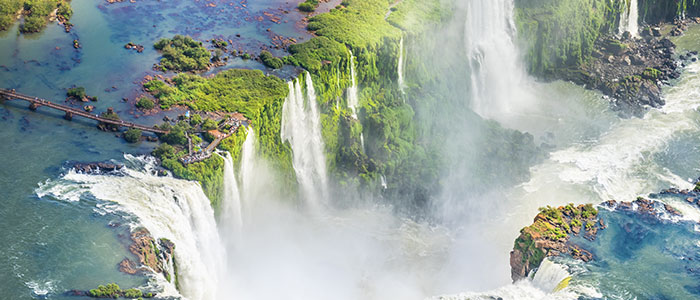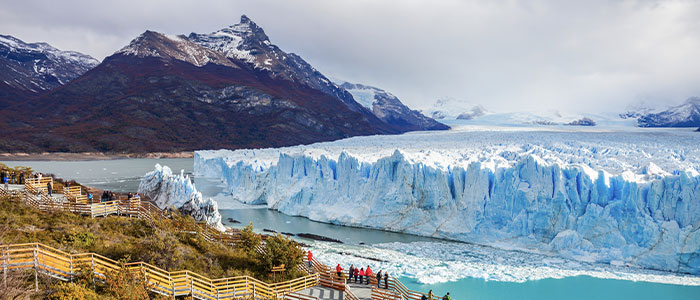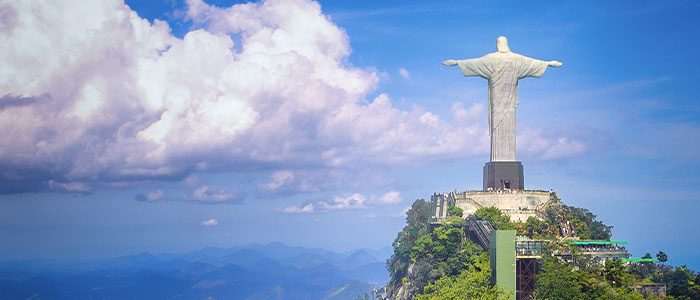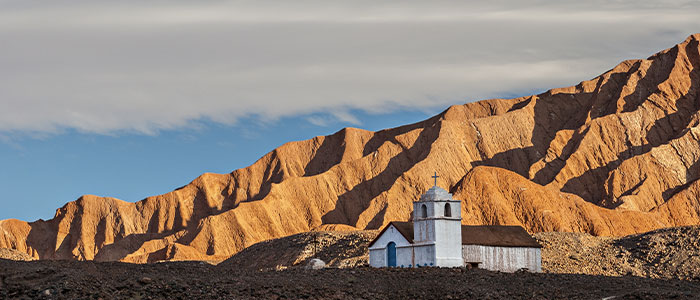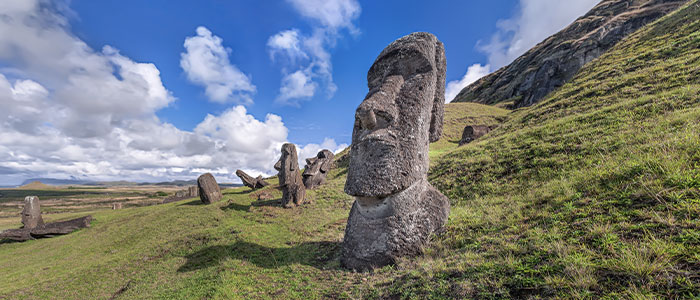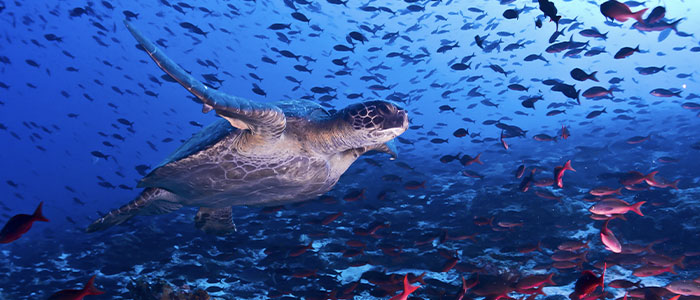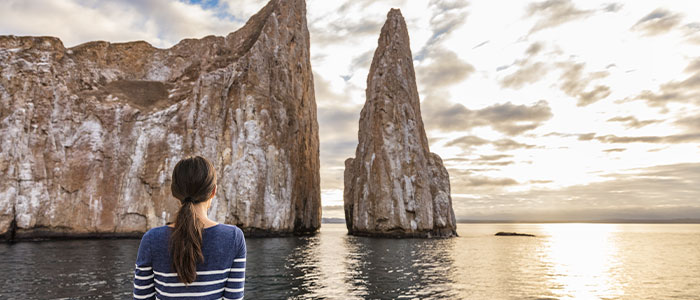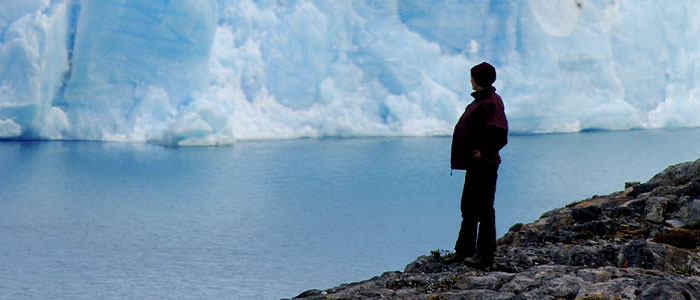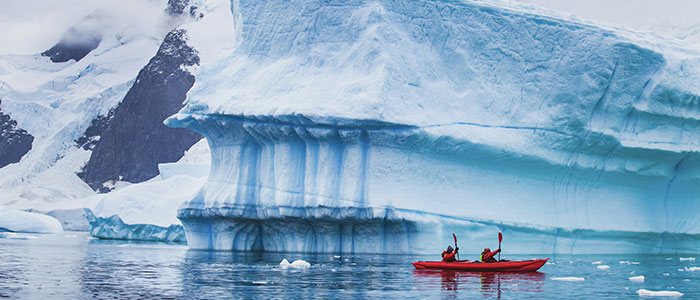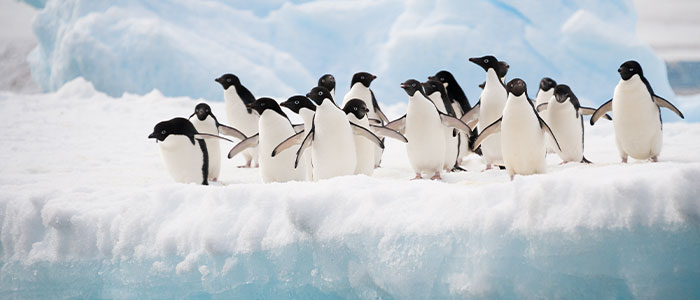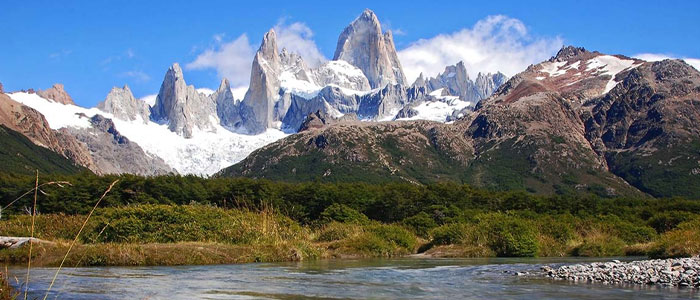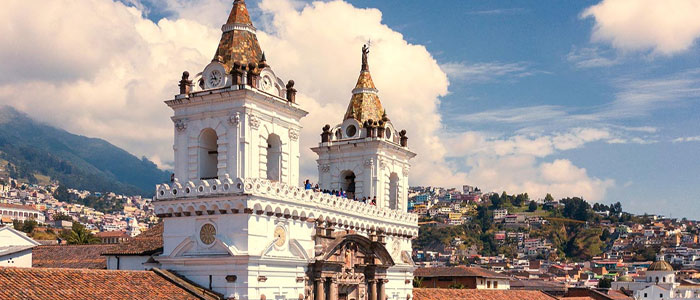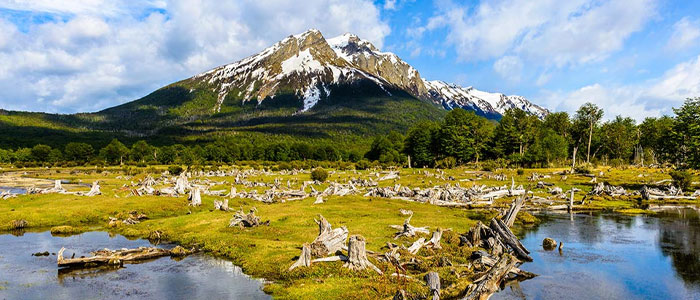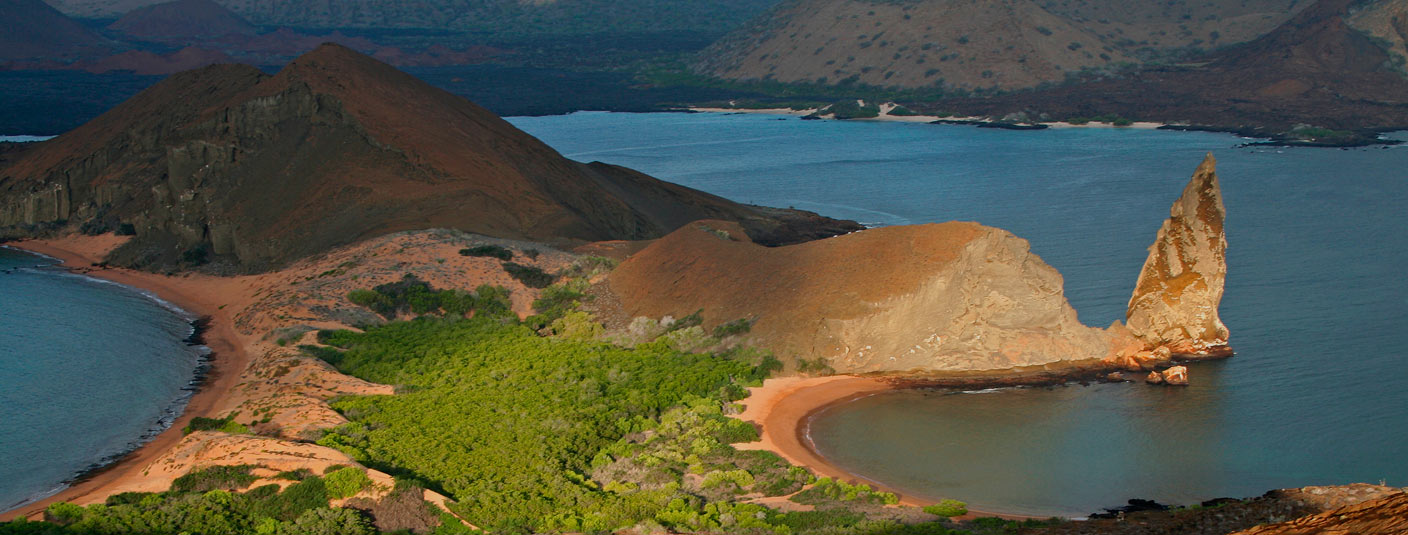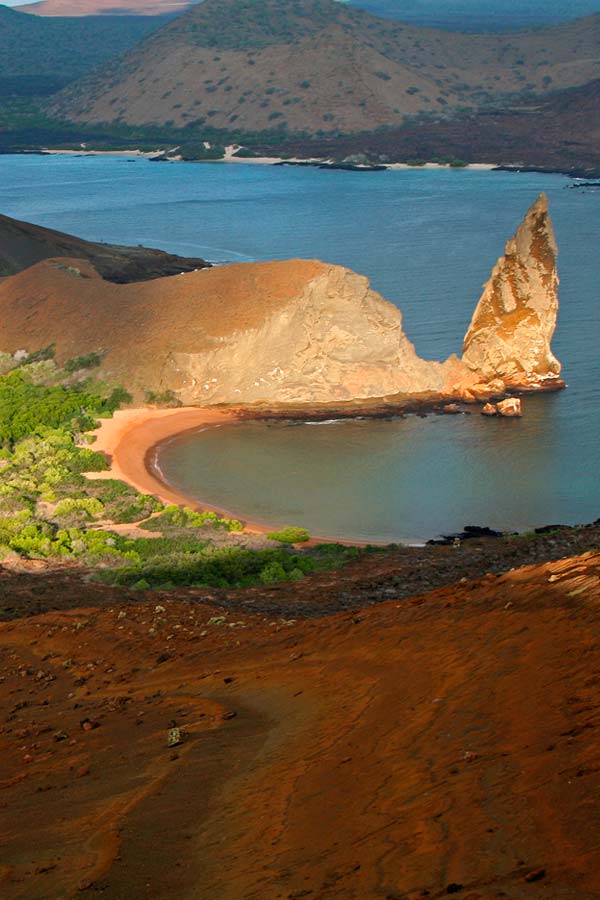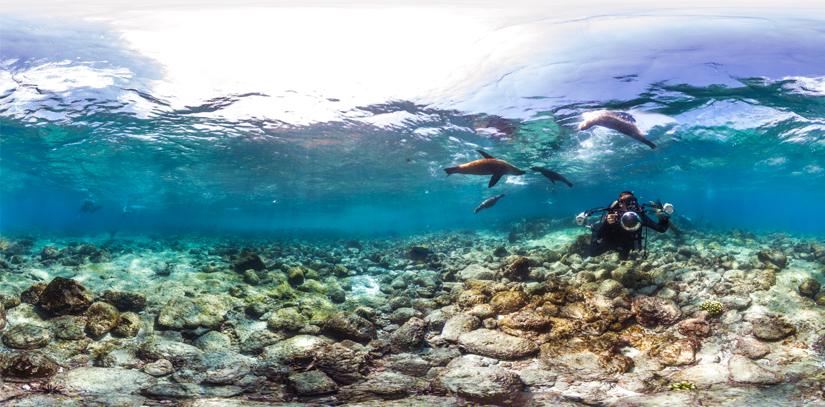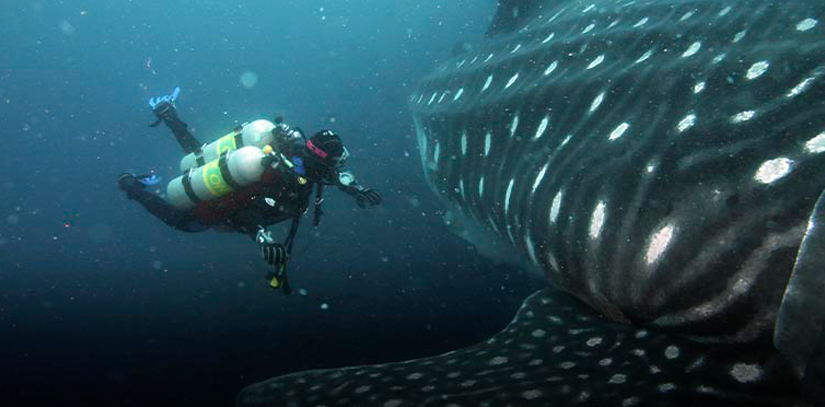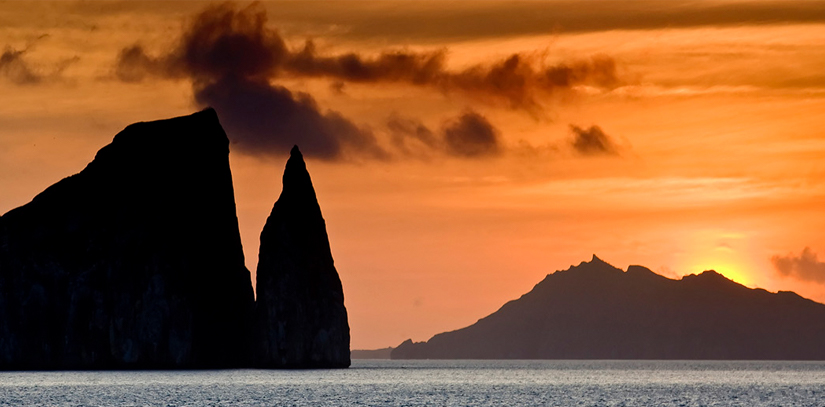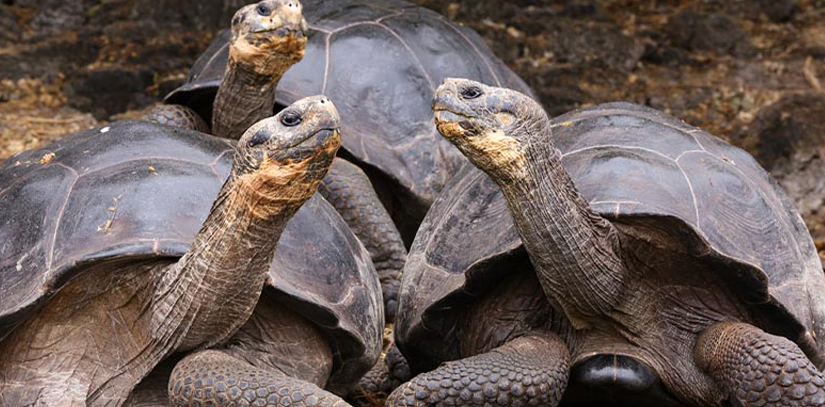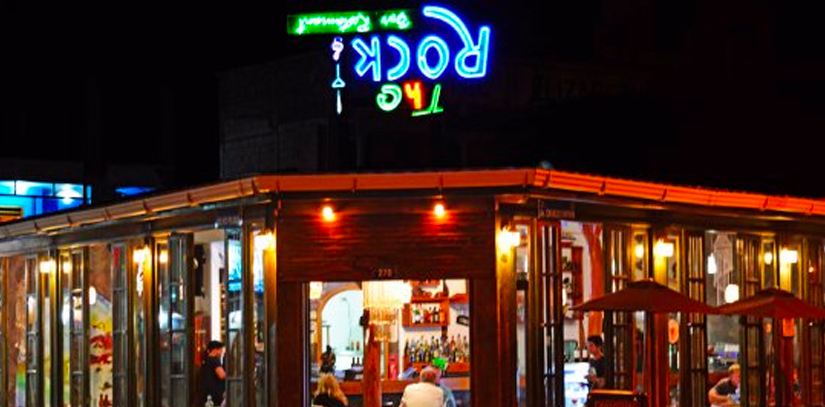Baltra
The small island of Baltra is situated at the center of the archipelago. The isle is extremely arid with little vegetation, which comes in the form of cactus and salt bushes. Created by a geological uplift, the island featured the only airport on the Galapagos until 1986 when San Cristobal Island opened another.
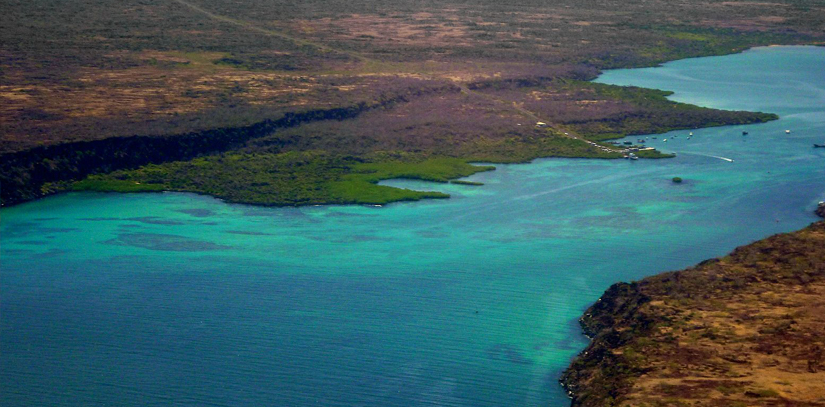
Travelers who arrive in Baltra will immediately be taken by bus to one of two docks where they will either board a cruise ship or a common ferry that will take them to the island of Santa Cruz. Since Baltra is not part of the national park but is instead Navy territory, the island is designated as a non-visitor site.
Bartolome
Named after life-long friend of Charles Darwin and Lieutenant of the HMS Beagle, Bartolome Island is one of the younger ones of the Galapagos. Considered as one of the isles to offer some of the most breathtaking sights of the archipelago, Bartolome features an extinct volcano, which tourists can easily climb. Once at the top, the view is magnificent.
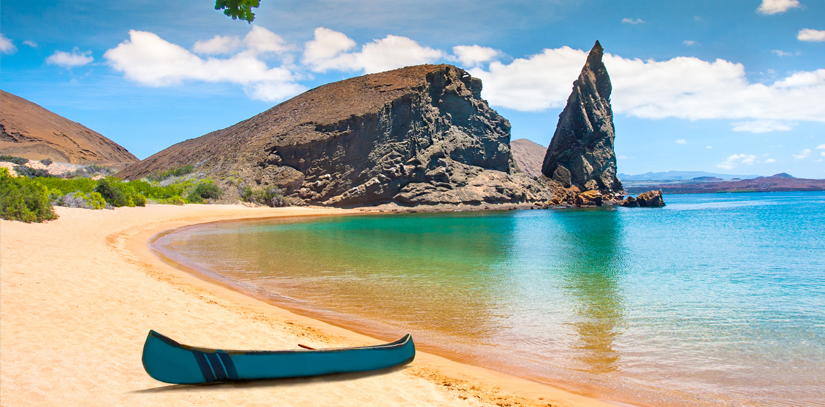
The isle is famous for the Pinnacle Rock landmark, which Galapagos penguins frequent. Tourists can snorkel and swim the waters here and also spot marine turtles, white-tipped reef sharks, as well as other tropical fish. The island is also a mating and nesting location for green turtles.
Darwin and Wolf
One of the smallest islands of the Galapagos, Darwin Island – named after the islands’ most famous visitor – has an area of just one square kilometer (0.6 square miles). The draw of this island includes the wonderful marine life that unfortunately can only be viewed by boat as there is no dry landing site. Though the site has been marked on maps for many years, the first visit to Darwin Island was not made until a helicopter landed on the site in 1964.
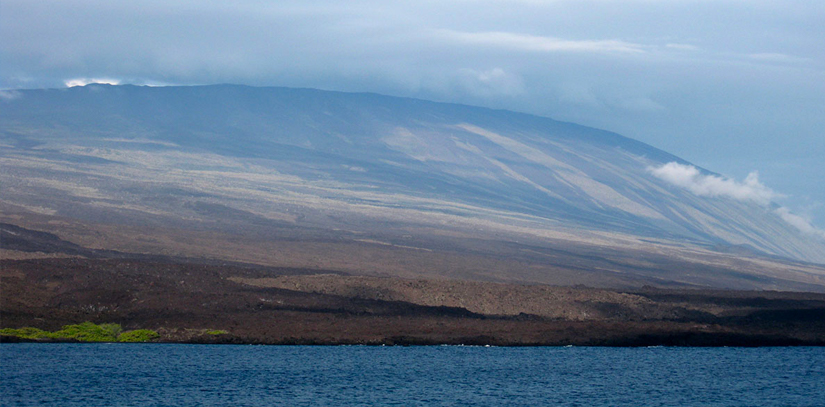
Of the Wolf Darwin Lineament, Darwin Island is the most northerly and reaches above the surface. Wolf Island, which is about 40 km long, has no sub surface peak.
The most well-known landmark of this tiny isle is a natural rock arch called the Darwin Arch and is situated less than a kilometer from main Darwin Island. Marine life that can be spotted in the waters of these two islands include whale sharks, dolphins, green turtles, and hammerhead sharks, while marine fowl include frigate birds and the red-footed booby.
Floreana
Popular with tourists, Floreana Island is one of the oldest of the Galapagos. It is also the island with the richest human history on the entire archipelago, dating back to the late 1700s. Everyone from pirates to settlers to early colonists visited this ancient isle.
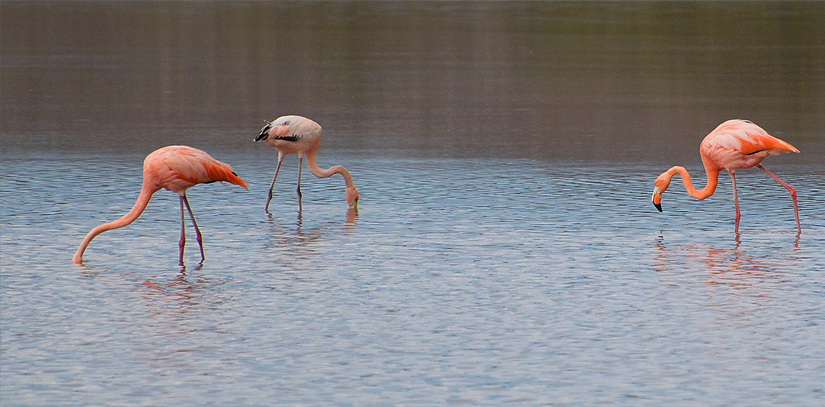
The island’s volcano has long been extinct and it is actually in the advanced stages of erosion. This erosion is responsible for the lush, beautiful Floreana landscape in the highlands as the process enriched the isle with soils and nutrients vital to supporting plant life. Named after Juan Jose Flores, the first president of Ecuador, the island has an area of 173 square kilometers (close to 67 square miles), with only close to 100 inhabitants living there. Tourists should be aware that services are very limited and should confirm in advance that their transportation back to a more tourist-centric island is secure; this unless previous plans have been made to stay at one of the island’s few lodging accommodations.
Known as the best place to snorkel in the Galapagos, the Devil’s Crown is a volcano that is almost completely submerged under the island’s beautiful waters. Erosion of the volcano has transformed it into a mass of jagged peaks, which together form the “devil’s crown.” Marine birds such as pelicans, frigates, and boobies call the remains of the volcano home. Travelers will be able to snorkel within the center of the crater and view sea lions, balloon fish, tiger snake eels, hammerhead sharks, sea turtles, and more unique sea life.
Another attraction on Floreana Island is Punta Cormorant, a beach which offers two distinct areas. The shore is a green sand beach, but the trail leads travelers past a lagoon which is home to many birds such as pink flamingos. Beyond this is a beach of white sand particles, aptly named “flour beach.” The waters here feature rays and ghost crabs.
Finally, one of the few attractions on the island that are visited for its human history rather than scientific significance is Post Office Bay. In 1793 Whaler Captain James Colnett erected a wooden post barrel where whalers would leave letters while they made rounds of the isles and ships returning home would do them a favor and mail them. Whaling ships were usually gone for about 2 years at a time, therefore the post office proved important in helping whalers maintain contact with their families. Today, tourists can leave their own letters and take a few to keep the tradition going by forwarding them on to the addressed.
Española
Named in honor of Spain, Española Island has an area of about 60 sq km. At close to 3.5 million years old, it is the oldest isle of the Galapagos. Sadly Española is dying, becoming a barren land with very little surviving vegetation. Still, the island manages to attract Galapagos sea lions since the decay process of the isle has given way to large bays.
The southernmost island of the archipelago, Española has always been very secluded from the other islands. Animals on the island were put in an extreme situation where they need to adapt solely to the island’s environment and natural resources. The marine iguana on Española, for example, is the only one of the Galapagos that changes color during mating season.
Two key attractions on Española are Gardner Bay and Punta Suarez. The former offers great waters to swim or snorkel, as well as a lovely beach on which to sunbathe. Punta Suarez has wildlife such as the hood mockingbirds, Galapagos hawks, and the famed Galapagos Booby birds.
Genovesa
With an area of about 14 sq km, Geneovesa Island is nicknamed the “bird island,” and with good reason: the island’s main attraction, Darwin Bay, is home to swallow-tailed gulls, frigate birds, red-footed boobies, lava gulls, doves, Darwin finches, and a variety of tropic birds.
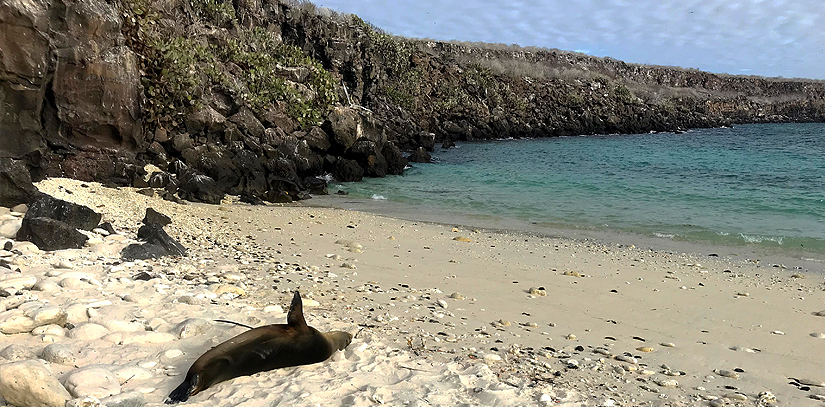
The Nazca and red-footed boobies can also be spotted from Philip’s Steps, a bird-watching highland that rises 25 miles in elevation. Once at the top, travelers can continue along the path inland and witness more seabird colonies in the Palo Santo Forest.
Tourists can take advantage of their location by diving the waters of Darwin Bay to appreciate these wonderful creatures more intimately and from a greater vantage point.
Isabela
The largest island of the entire archipelago, about 75 miles (120 km) long and larger than the rest of the islands combined, Isabela was named in honor of the Spanish queen. The isle’s shape resembles a seahorse, which is the result of the merging of six large volcanoes – five of which are still active – into a single landform.
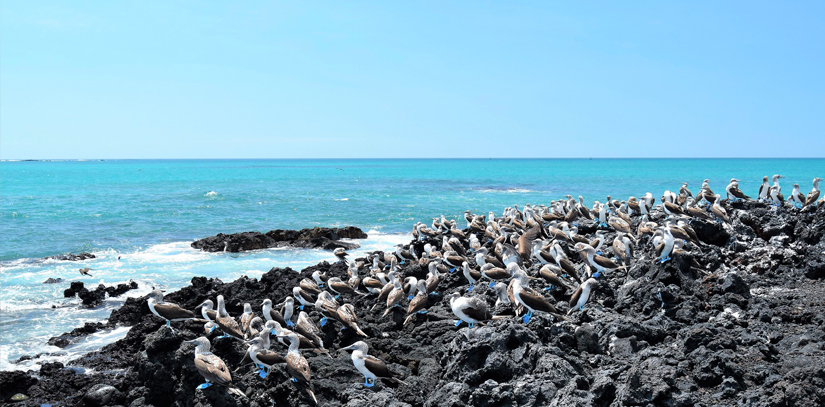
Since the majority of the visitor sites are located on the western side of the island, only faster cruise ships or those featuring longer tours make a stop at this island. As such, it has only just started to develop as a tourist center. However, there is still plenty to do on this beautiful isle and in Puerto Villamil, the town that hosts the largest amount of residents on the entire island. This is where tourists usually start their Isabela explorations. It is the island’s largest town and provides accommodation, restaurants, and other tourist services.
The area has many attractions for tourists to enjoy. About half an hour from the town is the Centro de Crianza, which is a giant tortoise breeding center. The center is surrounded by gorgeous lagoons where various birdlife such as flamingos hang around. The area boasts another beautiful body of water: Concha Perla Lagoon. The trail that leads you to this lovely lagoon is full of mangroves. Take a jump off the quaint dock and swim with sea lions here.
Situated in the southern region of the Island, between volcanoes Cerro Azul and Alcedo is Sierra Negra Volcano. Its caldera, which measures 6 x 5 miles (10 x 8 kilometers), is the largest of the archipelago and the second largest in the world. The trek from Puerto Villamill takes between 3 to 5 hours. However, the breathtaking landscape seen along the way and the chance to spot different sub-species of tortoises – the island is home to the largest number of wild tortoises of all the Galapagos isles – will surely be worth the trip.
Punta Moreno, on the southwest area of Isabela, is the ideal place to see Galapagos penguins. A tour of this area begins with a ride through the rocky but beautiful shores, which the friendly penguins call home. From there travelers will trek though trails of sharp lava rocks. Craters from here have become tide pools, with some enclosed by mangroves. Galapagos fowl such as pink flamingos, pintail ducks, and brown pelicans can be seen here.
Also situated on the west coast of island Isabela is Elizabeth Bay. No landings are permitted here as it is only a marine visitor site. This is another great site to see Galapagos penguins as it holds the largest concentration of the birds on all the islands. Here your boat will travel the waters of the island where travelers will be able to view brown pelicans, sea lions, golden rays, and other interesting creatures.
San Cristobal
San Cristóbal Island is home to Puerto Baquerizo Moreno, the capital of the Galapagos Province as well as the largest town on the isle. The town houses the island’s main tourist facilities. Currently the entire island is being developed as a main tourist center, second to Santa Cruz.
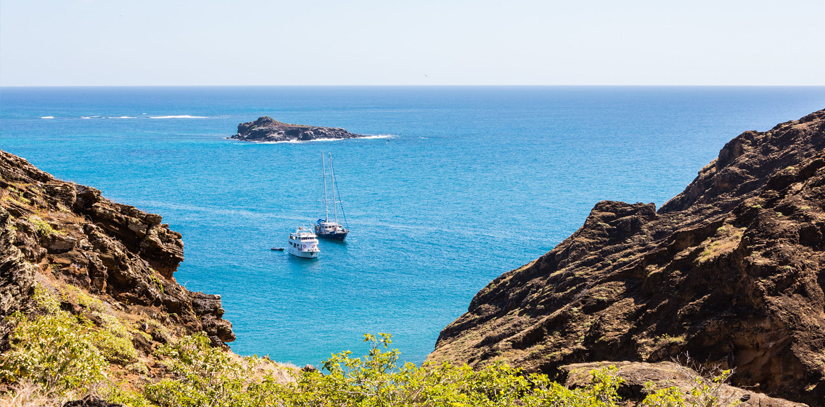
Whether you get here by airplane (recommended) or boat from Puerto Ayora (noisy and rough), getting around Puerto Baquerizo Moreno and the island is relatively easy. A taxi anywhere around town should not be more than $1. To make the journey to neighboring towns such as El Progreso and Cerro Verde, consult the information board at the Tourist Pier for costs to and from, as the local government has established official prices for these places.
San Cristóbal is known on the archipelago as the spot to view a wide variety of animals such as sea lions, giant tortoises, blue and red-footed boobies, dolphins, swallow-tailed gulls, and most especially, frigate birds. These fowl make their nests here following their well-known courtship. To see these magnificent birds in their natural habitat travel one mile east of the port to Cerro Tijeretas (Frigate Bird Hill). On a cloudless day, travelers can get a great view of the bay from this point.
Situated on the western part of town is the Centro de Interpretación (Galapagos National Park Visitors Center) where visitors can see the wonderful display on the conservation efforts and the history of the islands. Admission is free.
Not a particularly pleasant location, La Loberia is a rocky beach that is an ideal place to see blue-footed boobies, yellow canaries, a sea lion colony, and marine iguanas. Travelers can walk a bit further to the cliff to spot rays and tortoises but it is advised that they do not leave the designated trail.
Buses from San Cristóbal make the journey out to the town of El Progreso daily as there are various attractions in the small town that hosts many farms. It is a 2 ½ hour walk from the town to El Junco Lake, the largest freshwater lake in the Galapagos Islands.
Also in the area is the La Galapaguera Natural, a section of land used solely for the re-population of the famous Galapagos giant turtles. Admission is free to this attraction that also houses a small breeding center. Another interesting place to visit is Isla Lobos, a large nesting bird colony, as well as a sea lion colony.
Punta Pitt in the far northeast region of the island is the definitive spot to view all three species of the booby bird – blue-footed, red-footed, and masked. This attraction also features interesting lava formations, and Frigate Birds will make an occasional appearance.
Finally, do not miss Kicker Rock, the rock remains of a crater, which is situated off the northwest coast of the island. Nazca and blue-footed boobies can be found on the cliffs of Kicker Rock. The waters are also a great place for snorkeling or scuba diving.
Santa Cruz
The Galapagos island of Santa Cruz is not the largest of the archipelago but it is considered the most important as it is the most developed and visited of the islands. Located in the center of the neighboring isles, Santa Cruz is home to the largest human population of all the islands. The town of Puerto Ayora is where the majority of these residents live and as expected with such a large population, hotels, shops, restaurants, and a few night clubs can also be found here.
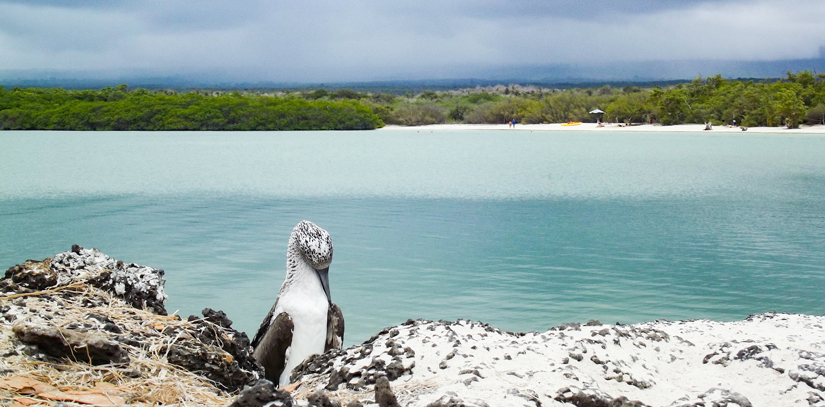
Once you arrive at either of the islands’ main airports, airport busses will transfer you to Puerto Ayora, the main ferry departure terminal of the Islands. Most tourism business is conducted on the waterfront. Here, if not already part of a guided tour, visitors can take water taxis available on the main dock or utilize colectivos (white pickup truck taxis) that travel around town.
In terms of attractions, the famous Charles Darwin Research Station (CDRS) is located here. Inside the station visitors can learn about Galapagos ecology, geology, and weather patterns. In conjunction with the Galapagos National Park Service, whose headquarters are also located on Santa Cruz, the CDRS operates a giant tortoise breeding center here. The price for admission to the center is included in the $100 national park entry fee paid upon arriving to the Galapagos.
The Santa Cruz highlands – rich in vegetation – are also known for their lava tunnels, the longest of which are located on privately-owned farms nearing the towns of Bellavista and Santa Rosa. The entrance fee is around USD $5. Mountain-biking is also a popular activity in this area of the island. Mention it to your Latin America For Less Travel Advisor if you would like this excursion included during your Galapagos vacation.
An ideal place for snorkeling or swimming in Santa Cruz is Las Grietas, a wonderful gorge with a pool of crystal blue water at the bottom. However, if you are more interested in the unique geological formations on the island, be sure not to miss Los Gemelos (The Twins): two sunken volcanic craters that are perched on the highest point of the island in a constant cloud forest.
Garrapatero Beach is another wonderful place to swim or snorkel the beautiful waters of the Galapagos Islands while also witnessing interesting wildlife roam free. Here travelers will be able to spot blue-footed boobies, pelicans, marine iguanas, and crabs. Take a walk behind the beach to see the small lagoon and mangroves where marine fowl such as pink flamingos, stilts, and herons hide out.
Another natural wonder of Santa Cruz is Bahía Tortuga (Turtle Bay). Follow the 2-mile trail from Puerto Ayora to the bay that features one of the most beautiful beaches in all of Galapagos. Here travelers will be able to appreciate marine iguanas and turtles, the latter of which use the shores of the beach to lay their eggs between November and February. Be careful not to walk on the dunes located above the beach as this is the egg-nesting area.
Finally, it would be a shame for visitors to the archipelago to skip the National Park Tortoise Reserve. This is one of the few places in the entire Galapagos Islands where you can see giant Galapagos turtles in the wild. From the town of Santa Rosa, follow the unmarked trail that leads to the reserve. En route, keep an eye out for Darwin finches, Galapagos hawks, short-eared owls, and other fascinating creatures of these islands.
Rabida
Taking the name of the convent where Columbus left his son while he went on his journey around the Americas, Rabida Island has an area of almost 5 square miles and is recognized as the place to spot at least 9 species of Darwin finches. Other animal life found on this Galapagos Island is the white-cheeked pintail duck, which lives in a salt-water lagoon, along with brown pelicans and bird boobies. The lava which formed the island contains large amounts of iron which gives Rabida its unique red color.
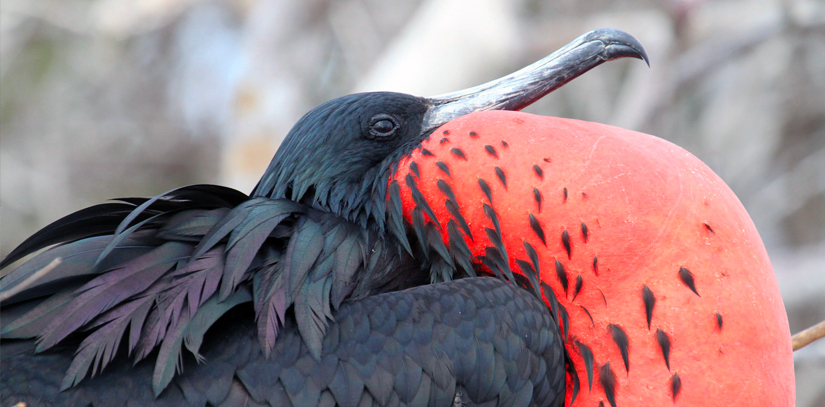
Santa Fe
Lying in the center of the Galapagos Islands, Santa Fe is one of the oldest of the archipelago. Vegetation forms a thick forest of the largest species of Opuntia cactus. Named after a Spanish city, the island is teeming with the Barrington Land Iguana. Travelers can visit Barrington Bay to spot a colony of sea lions or trek to the cliffs of Santa Fe which provide shelter for red-billed tropic birds, swallow-tailed gulls, land iguanas, and lava lizards.
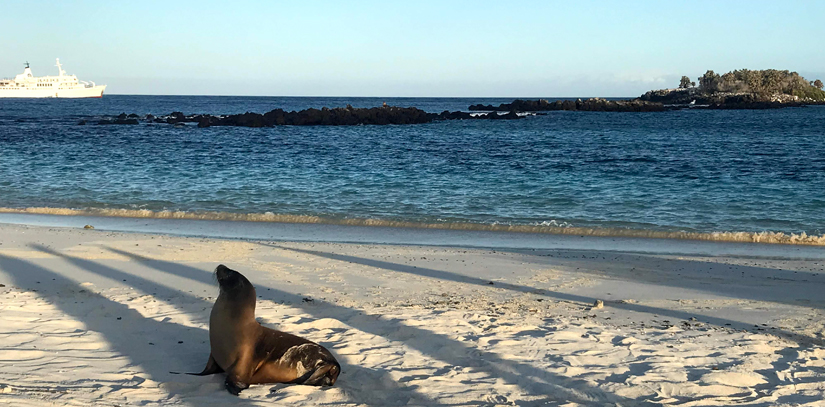
Santiago
Santiago Island is also known as San Salvador, the first island discovered by Christopher Columbus. The island’s total area amasses to 360 sq. miles (585 sq km), including two overlapping volcanoes. The oldest recorded lava flows on the island date to over 750,000 years ago. Travelers to this Galapagos Island can view Marine iguanas, sea lions, flamingos, sea turtles, dolphins, and even sharks. The famous Darwin finches and Galapagos Hawks can also be found on Santiago Island.
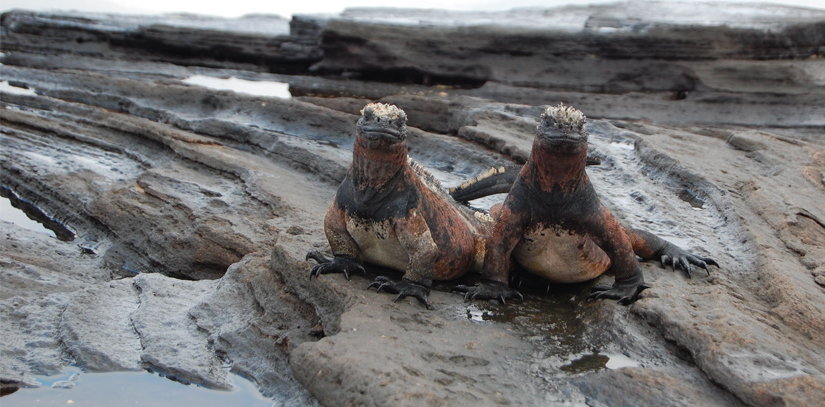
The beautiful isle features many natural landmarks. At Puerto Egas, a lava shoreline with rock formations hosts a great assortment of wildlife such as marine iguanas and lightfoot crabs. Visitors here can also snorkel and catch a glimpse of a variety of tropical fish.
For those especially interested in geology, another wonderful attraction is Sullivan Bay. Tourists can wander over hardened black lava flows that display lava bubbles petrified on the surface. The two nearby beaches are an ideal place to spot nesting turtles.
Finally, divers can practice their sport at Cousin’s Rock. The triangular rock rises some 33 feet (10 meters) out of the clear Galapagos waters and is comprised of various layers of igneous rock.
Fernandina
Named after King Ferdinand II who sponsored Columbus’ voyage, Fernandina has an area of about 642 sq km (third largest) and is considered the youngest island. Fernandina is an active shield volcano that has been erupting since April of 2009. As of today, no foreign species have been introduced to the environment.
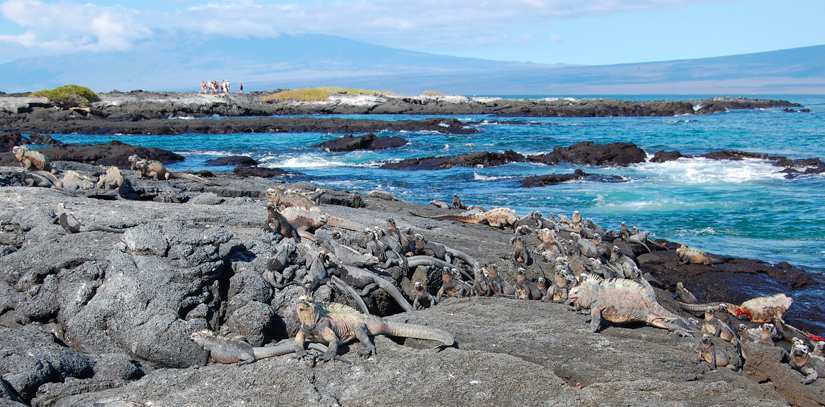
Attractions on the isle include Punta Espinosa, a thin stretch of land where many marine iguanas can be seen lounging on black lava rocks. Out of all the islands, Fernandina actually hold the largest colony of these interesting creatures. Other wildlife that live on the island are the well-known flightless cormorant, pelicans, sea lions, and Galapagos penguins.
Since Fernandina’s volcano is still very active, with eruptions on record since 1813, the vegetation on the island is sparse. Still, even as Fernandina has seen more volcanic activity than the other Galapagos Islands, it is still one of the most popular with tourists thanks to the many Galapagos animals that can be spotted in an exciting but forbidding environment.
Seymour
The island of Seymour was formed as a result of the uplift of underwater lava formations. Situated north of Baltra, the entire island is covered with lush and low vegetation.
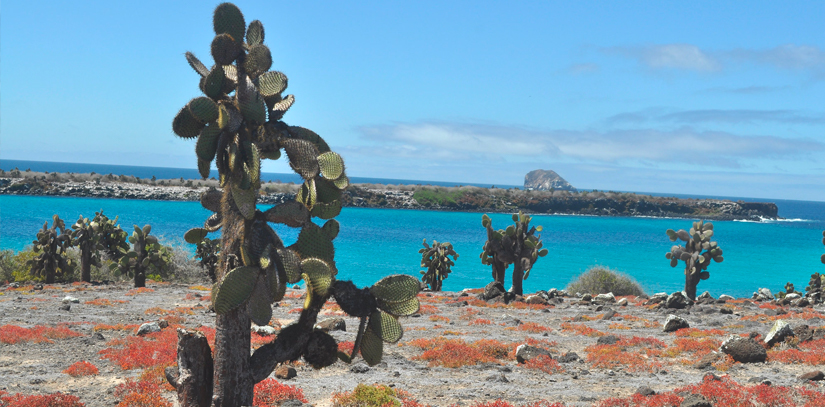
If you are hoping to see the frigate bird, this is the ideal island on which to do so as it contains the largest colony of the fascinating bird. If the nesting conditions are ideal, Seymour is also known to have the largest population of the interesting blue-footed booby bird. Other animals to be seen on this island are friendly sea lions who lounge on the beach of Seymour as marine iguanas strut by. If fortunate enough, you might be able to spot a Galapagos snake.
Pinta
Pinta Island has an area of 40 miles (60 km) square and features active volcanoes on its northernmost point. This Galapagos Island is home to a variety of animals, the most famous of which was Lonesome George, the Galapagos tortoise. George does not live on Pinta currently and is instead kept at a research facility where he is watched over. Instead, visitors to this isle can be sure to see Galapagos hawks, marine iguanas, dolphins, sea lions, swallow-tailed gulls, fur seals, and more.
